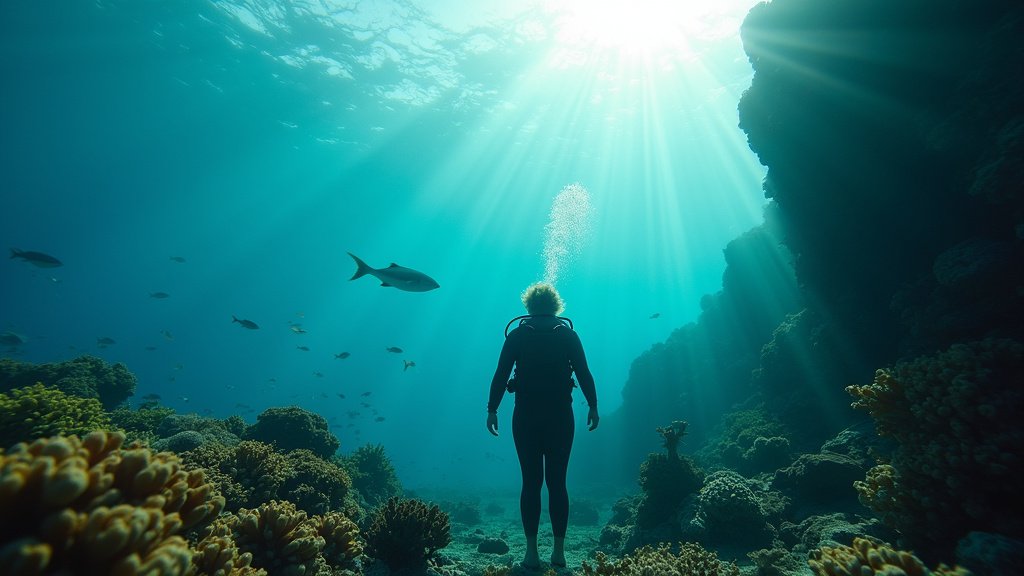In an era when authenticity reigns supreme and audiences seek fresh, unfiltered voices, a new kind of celebrity has emerged—entirely digital, yet boasting millions of devoted followers. Virtual influencers are computer-generated personas powered by sophisticated 3D modeling, AI-driven personalities, and savvy social-media strategies. From Lil Miquela’s fashion-forward posts to FN Meka’s chart-topping music career, these AI-born stars blur the line between the physical and digital worlds, commanding brand partnerships, launching music tracks, and even attending red-carpet events as holograms. As brands pour marketing dollars into these pixel-perfect personalities and audiences embrace their unique charm, virtual influencers are reshaping the rules of fame, creativity, and commerce in 2025.
1. The Rise of Virtual Celebrities
From CGI Curiosities to Cultural Icons
The concept of digital avatars isn’t new—longtime internet denizens will recall the MySpace “Luna” character or Sony’s “Neuromancer” tie-ins in the late ’90s. But the last half-decade has seen a quantum leap. Advances in real-time 3D rendering, facial-capture animation, and natural-language-processing AI enable virtual influencers to post polished images, converse with fans authentically, and adapt their personas based on audience feedback.
- Lil Miquela: Debuted in 2016, Miquela Sousa amassed over 3 million Instagram followers by combining hyper-realistic fashion shoots with social-justice commentary. By 2025, she’s launched her own NFT gallery of digital art, partnered with Dior and Prada for virtual runway shows, and released a surprise EP that charted on Billboard’s Dance/Electronic list.
- FN Meka: Touted as “the world’s first AI rapper,” FN Meka’s synthetic vocals and dynamic lyrics—generated with GPT-style models trained on hip-hop corpora—have scored placements in video games and commercials. Major labels now court Meka for collaborations, drawn by his built-in digital fanbase.
Why Brands Embrace Virtual Influencers
- Creative Control & Consistency: Virtual influencers never age, never cause PR scandals, and can be directed with absolute precision. Brands script their interactions, ensuring alignment with campaign goals.
- Lower Long-Term Costs: After upfront development, maintaining a digital persona costs far less than paying A-list human talent. Licensing fees, wardrobe changes, and travel expenses vanish—digital wardrobes and CGI sets replace real-world logistics.
- Cutting-Edge Appeal: Associating with a virtual star signals tech-savviness and piques media interest. Campaigns featuring holographic brand ambassadors generate buzz unsurpassed by conventional celebrity endorsements.
2. The Technology Behind the Illusion
3D Modeling & Real-Time Animation
Creating a convincing virtual influencer begins with photorealistic 3D modeling. Artists sculpt digital faces and bodies in tools like Blender and Maya, layering high-resolution textures to mimic skin pores, hair strands, and fabric weaves. Real-time engines (Unreal Engine, Unity) power social-media–ready renders, allowing influencers to appear in virtual backdrops or seamlessly composite into real-world photos.
AI-Driven Personality & Dialogue
Natural-language AI models—fine-tuned on diverse text corpora—generate captions, replies, and tweets that reflect a carefully crafted persona. Brands collaborate with AI trainers to imbue virtual influencers with consistent values, linguistic quirks, and topical awareness. Reinforcement-learning loops incorporate fan responses: if certain humor styles or advocacy posts drive engagement, the AI booster prioritizes similar content.
Deepfake & Motion Capture
For video posts and virtual appearances, motion-capture suits and facial-capture rigs record human actors—often professional models or dancers—performing scenes. Their movements and expressions map onto the digital avatar in real time, preserving nuanced performance while retaining the influencer’s stylized proportions. In high-budget activations, holographic projection systems bring these avatars to physical events, where they can “walk” red carpets and interact with live audiences.
Blockchain & Digital Ownership
Many virtual influencers release NFT drops—limited-edition digital art pieces, avatar accessories, or even “meet-and-greet” tokens. Blockchain ensures scarcity and provenance, allowing fans to trade collectibles on secondary markets. Brands co-create branded NFT wearables—imagine a digital handbag that Lil Miquela “wears” in a post—which fans can purchase to deck out their own avatars across metaverse platforms.
3. Cultural Impact and Fan Engagement
Fandom Beyond the Physical
Virtual influencers cultivate communities reminiscent of K-Pop fandoms: fan art, remix videos, and cosplay abound. Dedicated Discord servers buzz with speculation about the influencer’s next project, lore backstories expand the universe, and fan-driven narrative arcs keep audiences invested. In response, influencers host virtual town halls—live-streamed AMA (“ask me anything”) sessions where AI moderates and routes questions to human overseers ensuring brand messaging stays on point.
Social Advocacy and Authenticity
Surprisingly, virtual influencers are forging genuine social-justice partnerships. Miquela’s team has staged digital climate protests complete with AR overlays showing melting ice caps, granting her “participation” in COP29’s virtual pavilion. Within 2025, she’s co-narrated a UNESCO audio documentary on cultural heritage, lending her voice to global causes in ways some human celebrities shy from due to scheduling constraints.
4. Ethical, Legal, and Societal Debates
The Authenticity Dilemma
Critics argue virtual influencers perpetuate inauthenticity—artificial avatars posing as relatable personalities. Platforms have begun adding “#AIInfluencer” disclaimers to ensure transparency. Some jurisdictions consider labeling regulations akin to “ad disclosure” laws, requiring explicit notes when content is generated or scripted by AI.
Labor and Representation
Behind every avatar are teams of modelers, AI trainers, voice actors, and scriptwriters. Unions advocate for fair compensation and credit recognition. Meanwhile, virtual influencers have sparked debates about representation: do AI influencers “steal” opportunities from diverse human creators? Others see them as complementary—opportunities for human-AI collaboration rather than zero-sum displacement.
Intellectual Property and Deepfakes
Unauthorized deepfake clones of real people have generated calls for robust digital rights frameworks. Brands invest in watermarking tools and legal protections to prevent misuse of their avatars, ensuring their virtual ambassadors remain safe from piracy and impersonation.
5. The Business of Virtual Influencers
Monetization Streams
- Sponsored Posts & Brand Partnerships: Fees range from $10K to $100K per post, depending on follower count and engagement rates—competitive with mid-tier human influencers.
- Merchandise & NFT Drops: Limited-edition digital and physical merch—t-shirts, prints, avatar skins—drive direct-to-consumer revenue. Exclusive NFT sales often sell out in minutes.
- Appearances & Virtual Events: Brands pay premium rates for virtual meet-and-greets, holographic product launches, and VR concert guest spots—extending the ambassador role well beyond static posts.
- Affiliate Marketing & E-Commerce Integration: Swipe-up links in Instagram Stories or TikTok bios direct followers to shoppable affiliate pages, generating commission on every purchase.
ROI and Analytics
Rich data analytics track click-through rates, engagement heatmaps, and sentiment analysis, allowing brands to measure ROI with surgical precision. A/B testing of avatar styles, caption tones, and posting schedules optimizes performance—results that human influencers can’t consistently deliver without exhaustive A/B experiments.
6. Case Studies: Success and Controversy
Lil Miquela x Prada Campaign (2025)
Miquela fronted Prada’s spring collection in a fully digital campaign. Her hologram appeared at Milan Fashion Week, eliciting front-row selfies alongside human influencers. The campaign generated a 25 percent increase in young-adult brand engagement and a viral hashtag, #PradaDigital, cementing Prada’s reputation as a tech-forward luxury house.
FN Meka’s Label Deal Backlash
After FN Meka signed with a major record label, fans criticized the partnership for “commercializing” an AI persona without transparency on data sources. The label responded by releasing a detailed white paper on Meka’s AI-training ethics, but the controversy highlighted risks when digital avatars navigate complex cultural and legal landscapes.
7. The Future of AI-Driven Stardom
Personalized AI Avatars for Everyone
As consumer-grade avatar creation tools emerge, individuals will generate their own micro-influencers—digital doubles that post on their behalf, manage diaries, or even negotiate on social platforms. This democratization could blur the line between influencer marketing and personal branding more than ever.
Hybrid Human-AI Collaborations
Expect collaborations between virtual and human stars—duets in AR concerts, co-hosted livestreams, and even joint fashion lines where AI designs complement human-crafted pieces, creating symbiotic creative ecosystems.
Evolving Platform Policies
Social platforms will refine policies around AI personas—verification badges, content-authorship tracking, and stricter community standards to ensure ethical use. Verified virtual influencers may enjoy new platform privileges alongside human counterparts.
Conclusion
Virtual influencers have moved from digital curiosities to cultural power players—commanding brand deals, igniting fandoms, and pushing the boundaries of what “celebrity” means in the 21st century. Powered by cutting-edge 3D modeling, AI personalities, and blockchain provenance, these avatars offer creative control, cost efficiencies, and novel engagement avenues that human influencers struggle to match. Yet they also raise critical questions about authenticity, labor, and digital rights. As technology and society adapt, virtual influencers will remain at the forefront of pop-culture innovation—whether through holographic runway shows, AI-co-written music, or personalized avatar assistants in our daily digital lives.
Whether you’re a marketer, creator, or curious fan, understanding this new breed of star is essential. In a world increasingly mediated by screens and algorithms, the next great influencer might not be born of flesh and blood—but of code, pixels, and a dash of human imagination.





